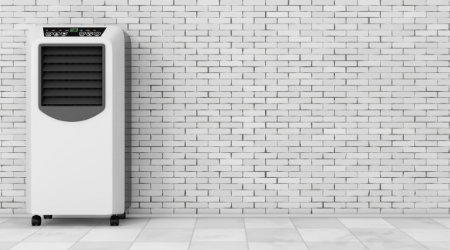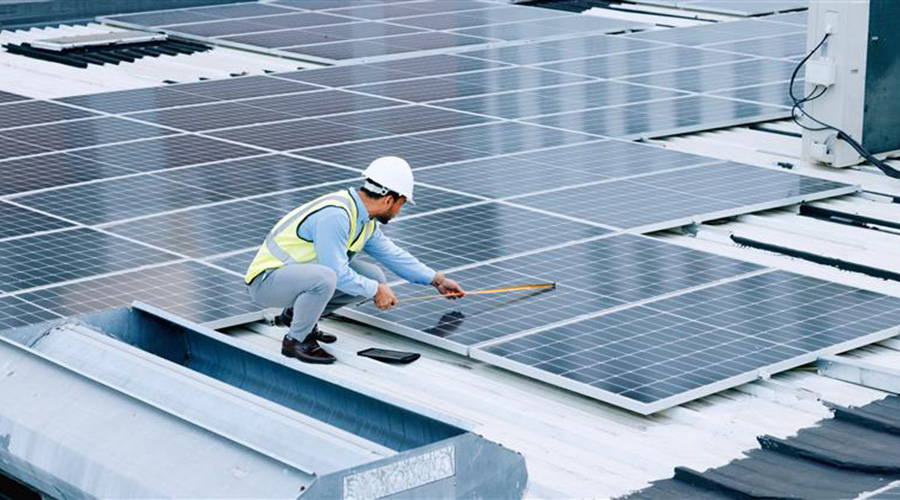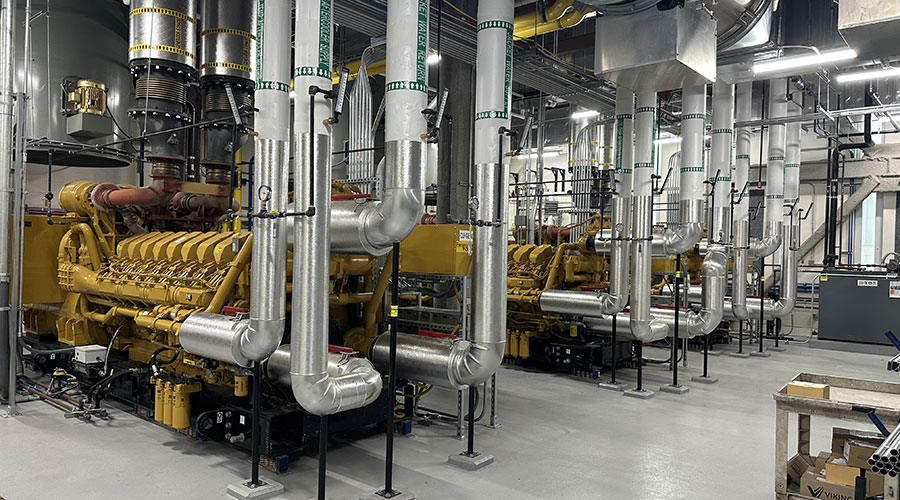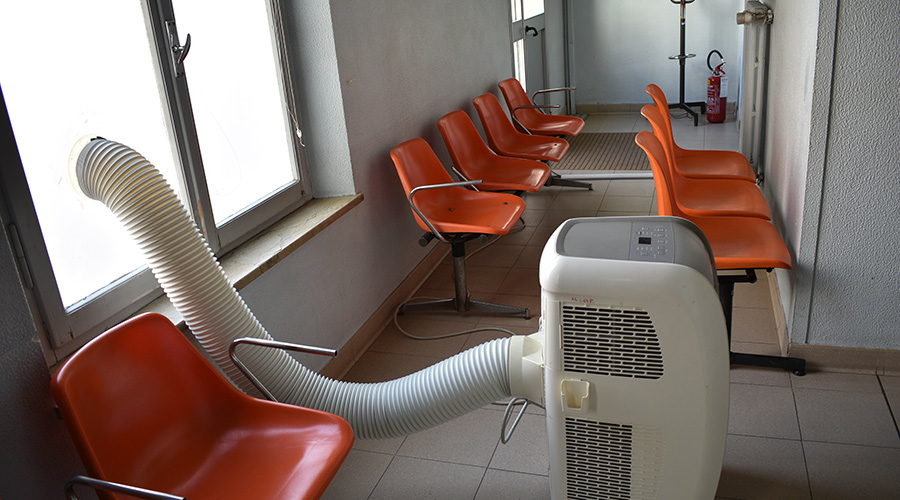Consider Portable Cooling Options While Occupants Slowly Return
Managers can use portable units to cool partially occupied buildings or temporary workspaces.
Winter is fading, and spring is here. Facility HVAC systems will be switching their primary function from heating to cooling as temperatures rise. Air conditioning, in past years — and still, in some parts of the world — considered a luxury, is now seen in many settings as a necessity. People who are accustomed to working, living, learning, shopping, eating, or being entertained in facilities where air conditioning is a given are not going to accept with much patience the absence of it.
A malfunctioning HVAC system becomes a facility manager’s priority when building occupants are not comfortable. Repair or replacement of a broken HVAC system is rarely a quick fix, however. It might take days or even weeks to get a system fixed or a new one in place.
This is probably the first scenario that comes to mind when considering instances when portable cooling units are required. But emergency use is only one reason to use portable cooling. There are other temporary and long-term purposes for bringing in portable cooling units. Cooled, conditioned air is an ongoing need in institutional and commercial facilities, even as the COVID-19 pandemic is prompting maintenance and engineering managers to revisit their practices and processes related to air circulation and HVAC system operation.
“Schools use them for portable classrooms; some of them don't have air conditioning,” says Robert Atkocaitis, vice president of sales marketing, OceanAire Inc. “Also restaurants, hospitals, office buildings — you name it. Anywhere you think that you’d want air conditioning, you can use a portable. If there’s a large event going on — if it’s going on outside — they can air condition a tent, too. There’s myriad of different reasons.”
Portable cooling in 2021
Today’s portable cooling technology is evolving as advances in features such as size, portability, effectiveness, and efficiency are made.
“Enhancements include quick-connect features for air ducts and water fittings,” says George Doring, general manager, Carrier Rental Systems and Spot Coolers. “Reliability has improved to lessen component failure and telemetry is being incorporated in some new models.”
“Portability-wise, they have come a long way. We can air condition areas we never could before,” adds Atkocaitis. “As far as efficiencies go — the energy-efficient ratings — the portables don’t really fall under any of those classes because they're temporary, so they're considered emergency use.”
The standard operational sizes for these portable units ranges from 1 ton to 5 tons.
“Sizes above 5 tons are more custom, depending on the application,” Doring says.
The physical size of the units in more common 1- to 5-ton range is relatively compact. They can range from around 3.5 feet tall and approximately 2 feet wide and 2 feet deep for the 1-ton units to about 4.5 feet tall and around 28 inches wide and 40 inches deep for the 5-ton units. Built on casters, they are relatively easy to move, install, and reposition as necessary.
When considering what size unit or units will be needed for an application, it’s not a simple one-for-one replacement.
“If you have a large rooftop unit that goes down in your building, a 10-ton unit, you're not going to simply replace it with 10 tons of portable cooling because of the cost and the time,” Atkocaitis says. “You’re only going to try to satisfy the area to make everybody happy until the system is fixed. Cost-wise, you're not going to replace it with 10 tons. You’re going to use half of that to get by for that short period of time.”
On average, 1 ton, or 12,000 BTUs, will cool about 400 to 500 square feet. It really comes down to a facility’s power constraints.
“If you have 2,000 square feet you want to cool down, you could use a 5-ton unit,” Atkocaitis says. “But if you don't have enough power to power up the 5-ton unit, you can bring in multiple 1-ton units and get the same thing done.”
Portables and the pandemic
As it has with almost all aspects of modern life, the COVID-19 pandemic has impacted the specification and use of portable cooling options. Although the assumption would be that demand for the units is down because so many people are working from home, that's not necessarily the case.
“Where office space is not highly occupied, fewer cooling problems tend to occur,” Doring says. “When large building systems are not being used, spot cooling is being used more for specific areas that require temperature and humidity control.”
Throughout the course of the pandemic, people have still been going in to work — in essential roles such as healthcare and in modified or socially distanced workspaces — and their need for a comfortable working environment remains the same.
“We've seen it in lots of areas in big office buildings; when people do need to go in, some buildings are not turning on their big systems,” Atkocaitis says. “If they're only going to be using one or two offices, they’re renting portable air conditioners and not turning on their big systems because it's saving tons of money.”
Portable units are also being brought in when makeshift work spaces are being created to maintain social distancing.
“People are moving into segregated areas where they never were before, where they’re putting in big dividers, so they need area coolers in there instead of one large system,” Atkocaitis says.
The U.S. Centers for Disease Control and Prevention (CDC) says the principal mode by which people are infected with the virus that causes COVID-19 is through exposure to airborne respiratory droplets carrying the virus. Larger droplets, some of which are visible, fall out of the air within seconds to minutes while close to the source of exhalation. Smaller droplets and particles formed when small droplets dry quickly in the airstream can remain suspended for minutes to hours and travel far from the source on air currents, according to the CDC. With the knowledge that this is primarily an airborne infection, there exists a growing focus on the availability of air purification and filtration options when specifying portable cooling units.
“The effects of COVID-19 have created a greater awareness of indoor air quality (IAQ) and filtration and a desire to have movable, portable filtration solutions,” Doring says. “The use of spot cooling along with additional localized air filtration is becoming more common. Spot cooler selection is mostly the same regarding sizing and capacity, although specialty units are now available with enhanced filtration, needlepoint bipolar ionization, and ultraviolet light.”
Filtration also has received greater attention during the pandemic than in recent years.
“We're being asked if we can put some type of heavy-duty filter in the units or something that will help purify the air,” Atkocaitis says. “The problem with that is if you put in a heavy-duty HEPA filter, you’re going to need to change the blower package because of the resistance that the filter gives the airflow.”
It's important to note that a HEPA filter will not kill the virus that causes COVID-19. The elements that can transport the virus — such as mucus, respiratory droplets, or a piece of dust — will attach to the filter so they cannot circulate in the environment. Appliances that use HEPA filters only work when they are on. Also, filters need to be cleaned or replaced regularly to work effectively, according to the manufacturer's instructions.
When the pandemic eventually ends, it’s important that facility and maintenance managers continue paying attention to IAQ best practices.
“Proper cleaning and sanitizing, air filter replacement and understanding the application in which the equipment will be used are key aspects of concern when using any portable cooling, heating, or filtration equipment,” Doring says.
From temporary to long-term
Although primarily a temporary fix to a short-term problem, portable air conditioners sometimes become long-term or even permanent installations. IT server rooms are one example.
“A lot of office buildings use a closet for their server room,” Atkocaitis says. “When that company grows they need more air conditioning but their server still sits in that little closet space. “That’s where you definitely want to put in a portable, and that’s where it becomes more of a permanent type thing. I would say in reality about 90 percent of portable use is rental, and the other 10 percent is permanent.”
Another reason to use portable cooling unit long-term is cost.
“Spot cooling can help when there are constraints in capital expenditures or long-term repairs are required for a truly permanent solution,” Doring says.
Shannon O’Connor is a freelance writer based in Mason, Ohio.
Related Topics:












